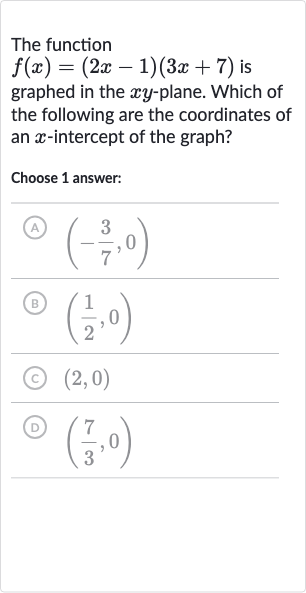Full solution
Q. The function is graphed in the -plane. Which of the following are the coordinates of an -intercept of the graph?Choose answer:(A)(B) (C)(D)
- Understand -intercept: Understand what an -intercept is.An -intercept is a point on the graph where the value of is zero. To find the -intercept, we set the function equal to zero and solve for .
- Set function equal: Set the function equal to zero.To find the -intercepts, we need to find the values of that make this equation true.
- Apply zero product property: Apply the zero product property.If the product of two factors is zero, then at least one of the factors must be zero. So we set each factor equal to zero and solve for . or
- Solve first equation: Solve the first equation for .
- Solve second equation: Solve the second equation for .
- Write -intercepts coordinates: Write the coordinates of the -intercepts.The -intercepts occur at the points and .
More problems from Multiplication with rational exponents
QuestionGet tutor help
QuestionGet tutor help
QuestionGet tutor help
QuestionGet tutor help
QuestionGet tutor help

